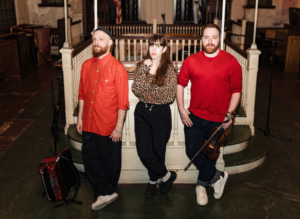A VR Journey Into Israeli-Palestinian Lives
Daniel Landau's "Visitors" invites participants at the Israel Museum to step into Israeli and Palestinian homes
Published Mar 6, 2023

Imagine stepping into a room that’s literally split in two — a living metaphor for two worlds apart. That’s the magic of “Visitors,” Dr. Landau’s captivating creation showcased at the Israel Museum. It’s not your typical exhibit; it’s a unique journey through VR goggles into the lives of Palestinian and Settler Jewish families.
Slip on a pair of VR glasses, and suddenly you’re in their living rooms, meeting families and hearing their stories. Dr. Landau captures emotional stories that bring you face-to-face with the complexities of the Israeli-Palestinian conflict. The exhibit is a multi-sensory experience, its purpose not just for the viewer to see; but also feel, understand, and develop a sense of empathy and intimacy.

Dr. Landau believes harnessing technology in art creates an opportunity to connect deeper with audiences: “VR glasses create detachment from the world, a sort of intimacy with another realty.” Learn more about Dr. Landua’s inspiration behind “Visitors,” along with his other work featuring VR and video art.
“Visitors” stands as a testament to the power of art and technology to transcend barriers, fostering a deeper understanding of the human stories entwined in the Israeli-Palestinian conflict. Landau’s vision is a step in the right direction to help educate, inspire, and bridge the gap between two seemingly irreconcilable worlds.
Culture Treasures Magazine is a gateway for art, design, and film enthusiasts, guiding them toward sources of inspiration and creation across the globe.
Reflections
For art lovers:
In what ways can art be used to bring about social and political change, and what are some examples of such efforts?
For tech lovers:
Can technology be used to broaden our perspectives and expand our understanding of the world, or does it merely reinforce our preconceived biases and beliefs?
For art students:
Can VR be used as a means of pushing the boundaries of traditional art forms, or is it merely a new tool for creating and experiencing art?
Want more?
Get curated JewishArts.org content in your inbox





